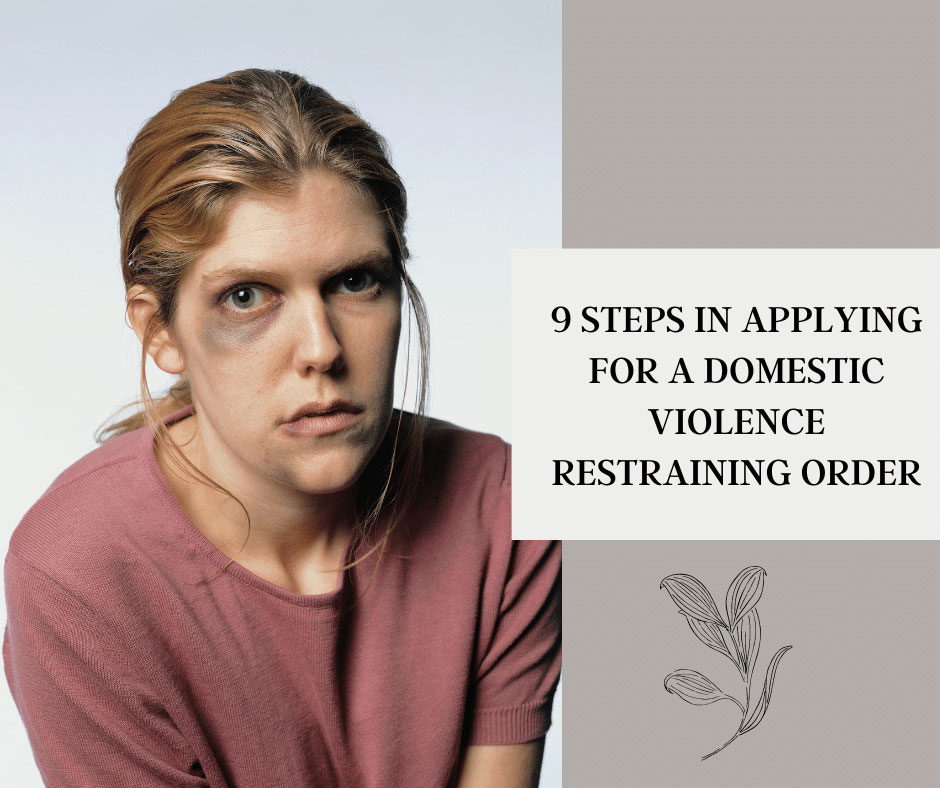9 Steps in Applying for a Domestic Violence Restraining Order
Domestic Violence Restraining Orders are tools for your protection. Here is how to get one.
In 2019, there were over 160,000 domestic violence-related calls for assistance in California. This number, as heart wrenching as it is, does not include the many women and menathat fail to report abuse for a number of reasons. If you feel afraid, controlled, or abused, call an Orange County domestic violence lawyer immediately.
All states have varying definitions of just what domestic violence is, and the steps required to help protect you and your loved ones. It may be for this reason, and the confusion that results, that many abusers go unreported.
It is estimated that, across the nation, 20,000 people call domestic violence hotlines every day, and, on average, more than 10 million women and men are physically abused by their intimate partner every year. And not even half of these are reported.
Don’t stand idle. Understand the law and take action. Here we define domestic violence as California law dictates, and then outline the steps involved when applying for a restraining order.
What Is Domestic Violence?
Before you take the steps to apply for a domestic violence restraining order, you must understand the legal definition to determine if it applies to your situation. According to California law, domestic abuse has occurred in the following cases:
- You and the person you are attempting to restrain must be married, registered domestic partners, divorced or separated, living together (now or in the past), dating or once dated, parents of a child, or closely related.
- Domestic violence includes more than physical or sexual assault. It also pertains to situations where there has been verbal, emotional, or psychological abuse.
- The abuser controls you through fear by threatening to harm you or someone else.
- The person is harassing or stalking you.
- They have destroyed your property or injured your pet.
If your child is being abused and they are under 12, you can file a restraining order on their behalf. If they are 12 or older, they can file the order themselves.
If you are unsure if your particular situation falls under these guidelines, call us. We will be happy to confidentially discuss the situation.
What are the Different Types of Domestic Violence Restraining Orders?
There are several types of orders, depending on your situation. Emergency Protective Orders are requested by law enforcement and can be granted by a judge 24/7. A Temporary Restraining Order grants you protection until your hearing date, which is usually for up to 25 days.
A Permanent Restraining Order lasts up to five years and is granted at your hearing. A Criminal Protective Order, also called a Stay-Away Order, means the abuser has had criminal charges filed against them and the criminal court has issued a protective order.
What Are the Steps in Applying for a Domestic Violence Abuse Restraining Order?
- Obtain restraining order forms. In California, these forms are available at courthouses and county law libraries. You can also find them online under California Courts Domestic Violence tab. There are multiple forms, one of which is a Temporary Restraining Order.
Other forms that may or may not apply to your situation include a Child Custody and Visitation Order, No Travel With Children Order, and an Income and Expense Declaration and Financial Statement for those requesting child support.
Some local courts may have additional forms.
- Complete the forms. If you need assistance, contact an Orange County domestic violence lawyer, or the court’s self-help center. It’s also a good idea to have these forms reviewed before filing.
- Make five copies and give them to the court clerk.
- The clerk will let you know when to return to find out the judge’s decision regarding your request. It must be by the next business day, though in many cases it is sooner.
- When you return, determine if the judge granted a hearing, made any changes to your request, and signed the Temporary Restraining Order. If approved, the court clerk will file it and give you your five copies that have been stamped as filed. There is no filing fee.
- These copies should then be distributed as follows: Keep two, and put one in a safe and secure place. The others go to anyone else protected by the order as well as places where the restrained person has been ordered not to go, such as work and school.
- The restrained person must be given or “served” these papers as well. Check to see if a law enforcement officer will do it for you. If not, it must be a third-party not involved in the case.
- This third-party must fill out a Proof of Personal Service form which you then file with the court. A copy of this as well as your temporary restraining order should be kept with you at all times.
- Attend the hearing. If you miss it, your temporary restraining order will expire and you will have to start the process all over. You have the right to have an Orange County domestic violence lawyer present.
What Are the Effects of a Restraining Order?
A domestic violence abuse restraining order is designed to protect those that have been abused or threatened with abuse. In most cases, the restrained will be ordered to do the following:
- Stay away from you and your family (including your family pet) as well as your home and work, and your children’s schools.
- Move out of your home, if you live together.
- Turn in any firearms.
- Pay temporary child support as well as specified bills.
Getting a Restraining Order With an Orange County Domestic Violence Lawyer
As board-certified family law specialists and practiced domestic violence lawyers, we take particular care in utilizing all available legal resources in order to help you and your children. We know the seriousness of the situation and understand the possible ramifications.
In addition to ensuring you and your children’s immediate safety, we file all forms required to seek a temporary and permanent restraining order, file criminal charges if applicable, and explore options for civil litigation.
Don’t hesitate to get the protection you need.





